By Matt O’Keefe
While still enjoying an extended stay in Gotham as the writer of series like Gates of Gotham, Nightwing, Batman Eternal and Batman Beyond 2.0, Kyle Higgins has ventured into Chicago for his first creator-owned comic book. C.O.W.L. is an Image series written by Higgins and Alec Siegel about the Chicago Organized Workers League, the first superhero labor union, that continues the the story that began in The League, a short film written by the duo. Now that C.O.W.L. has completed its inaugural arc, I spoke with Higgins about the book, learning more about how it came together and what lies ahead. Here is that interview, along with exclusive preview pages from Issues 6 and 7.
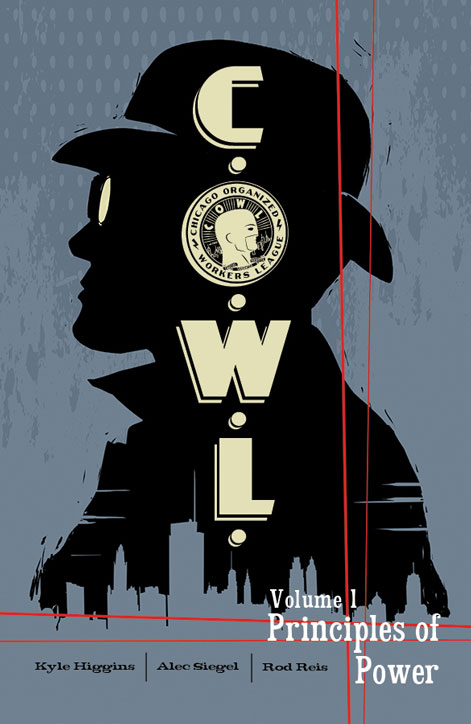
When I first heard about C.O.W.L. I wasn’t very interested because I thought superheroes had been done to death. I was happy to be proven wrong. Have other people shared that initial hesitation with you?
Not in so many words, no. But I totally understand what you mean. And to be honest, that was something that weighed on me a lot. Alec and I have always believed in our story, our world, and what we thought the book could be, but still… we were preparing to jump into the creator owned sphere at our favorite publisher and we were leading with a period superhero piece. I was definitely worried about the reaction, and whether anyone would give the book a shot. We very much felt like if people picked up the first issue it’d be clear that we weren’t doing a “superhero” book. Thankfully, it seems like people get that, as the response has been pretty great. I’m crossing my fingers that more people find the series now that the trade is out. We’ve got our legs under us now, and really, things are just starting to heat up for Chicago and C.O.W.L.
The transmedia element is what eventually drew me in. Did you know you wanted C.O.W.L. to be a comic when you were making the short film?
Yes and no. I remember, before deciding to do it as a film, trying to write the concept as a comic… but I was twenty and had no idea what I was doing (laughs). Truthfully, I never thought I’d write for a living, much less comics. In high school and college, with the rare exception of a short story here and there… I only ever wrote so I would have material to direct. But, when we finished The League and it opened doors for us at Marvel, I knew it was an opportunity too good to pass up. At that point, with a couple comics under our belt, Alec and I started talking about how cool The League would be as an ongoing story—either in TV or in comics. We never really felt like it worked as a feature film, since so much of what makes it interesting are the characters and the world building. That was actually one of the biggest story limitations with the short—while it’s set in the world of a superhero labor union, we actually did very little with that concept. The short is really just a superhero murder mystery.
Anyway, fast forward six years and here we are.
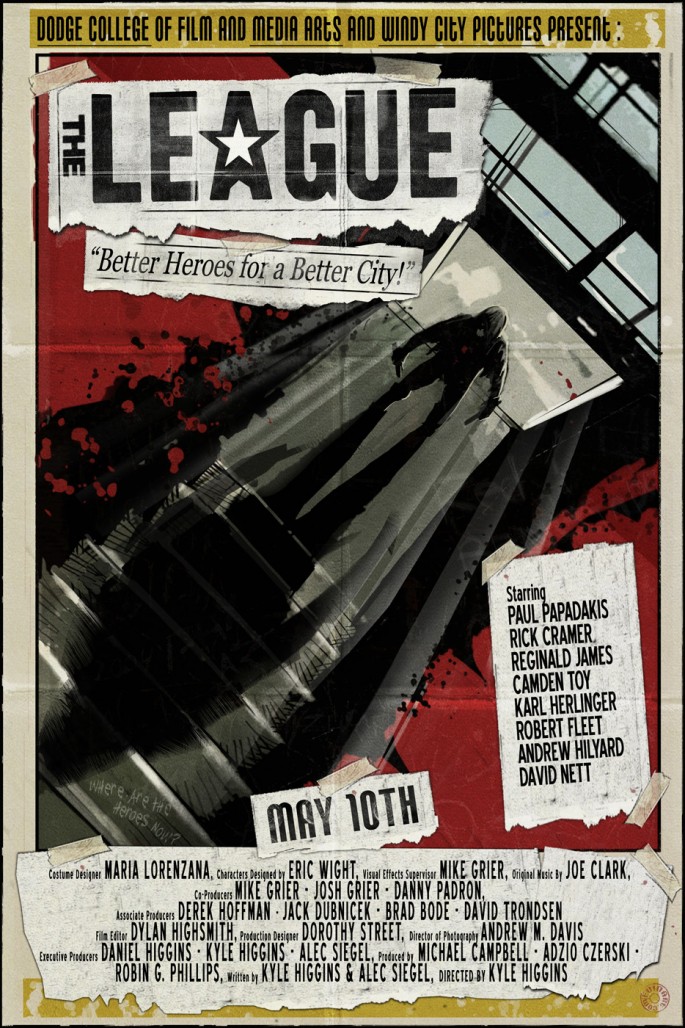
Have non-comic book readers who are fans of The League translated into an audience for C.O.W.L.?
In so far as friends, family, and old classmates, sure. But really, the film was never that widely seen. It’s available now through iTunes and Amazon, but at this point, I think most people who check it out are fans of C.O.W.L. I try to plug it in the C.O.W.L. letters’ column as much as possible. On the whole, I’m still very proud of it.
Both the film and the comic are heavily stylized. How does that help the comic, both in the market and creatively?
That’s one of the reasons Alec and I held off on pursuing it for a long time. We knew that if we were going to do a comic involving superheroes in any way, the series would need to be visually unique. With the time period and the noir overtones, we didn’t want it to look like a superhero book. The other thing is that, after three years of writing Batman books, my taste has changed. I used to only like big, mainstream-styled comic art, but more and more I started to find myself attracted to very stylized work. What Trevor McCarthy did on our Nightrunner story and then on Gates of Gotham really started to broaden my horizons. And, you know, that’s not to say Trevor isn’t a mainstream artist—I think he is—but his style is off center. Very kinetic and animated. And I love it.
So, as that relates to C.O.W.L., when we found Rod, we thought it could be a very different and interesting fit.
The unique style of C.O.W.L., from the multimedia art to the sound effects to the use of white space, really makes it stand out. How did you and Alec, Rod Reis and Troy Peteri settle on that design?
It starts with Rod. He came onto the project with a lot of ideas for his art, and started painting sequences to show us. They all included sound effects built into the art, and from those pages, Troy latched onto the idea of lettering the book in a kind of ‘80s, Epic Comics style. Specifically, with strokeless balloons. Trevor, Rod, and I started talking about covers and I really wanted to play up a Saul Bass, Robert McGinnis feel. It was a fine line to walk though, because although we’re trying to evoke the style of ‘60s illustration, we don’t want the book to necessarily feel like it was published in 1962, if that makes sense.
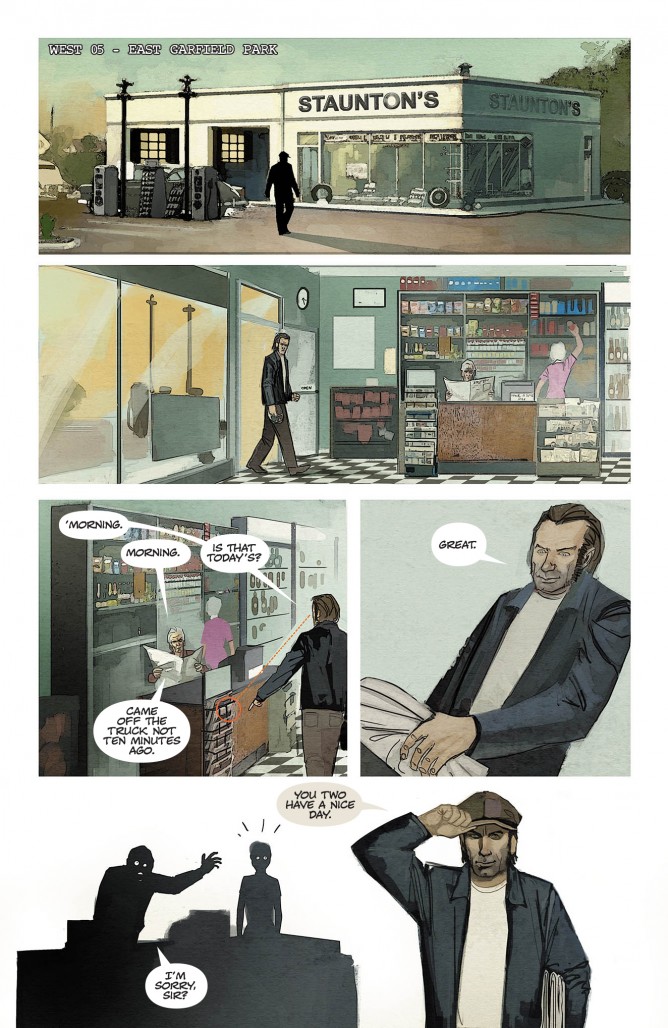
Where did you find Rod Reis?
Rod and I worked together at DC for about a year and a half, on Nightwing. He colored Eddy Barrows and several other artists on the series, and like any great colorist, brought a consistent palette to the book that carried over from artist to artist while still enhancing what made each one unique. Coming from a filmmaking and cinematography background, coloring is hugely important to me. It’s as significant as the line art, and when someone opens a comic, it’s the coloring they notice first. It’s also what sets the mood for the reading experience. After the first six months on Nightwing, Rod and I finally met at NYCC. He was doing water color commissions, which were incredible. I remember asking him if he’d ever be up for doing sequentials and, albeit timidly, he said it could be fun. Fast forward about a year, and we did a little eight page story for Brian Buccellato’s Foster anthology. Off that, I showed Alec and threw out the idea of C.O.W.L.
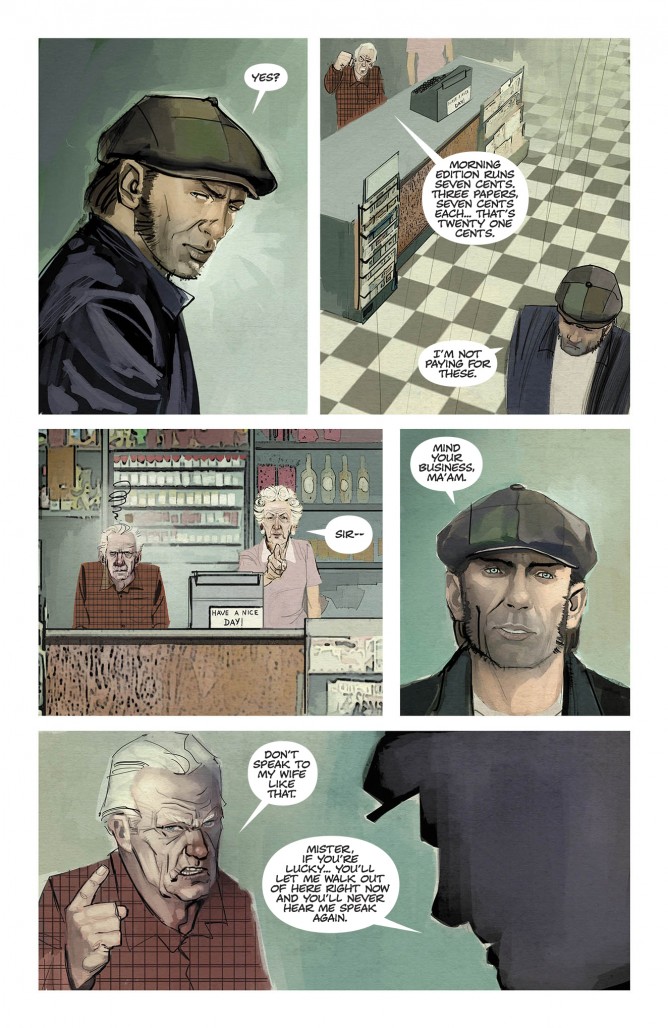
A common complaint I hear about creating a new superhero universes is how difficult it is to come up with original names for the heroes and villains. Did you struggle with that?
We struggle with that monthly (laughs). Yeah, it’s pretty hard. Of course, we named our main characters years ago, but any new characters we introduce… yeah. It’s a constant discussion and thesaurus checking.
You’ve spent a lot of time in Gotham recently with Nightwing, Batman Beyond 2.0 and Batman Eternal. Did you ever consider using a fictional city instead of Chicago when creating The League?
Never. With the exception of Gotham—and Bludhaven, because I love that Dixon/McDaniel Nightwing run so much—I don’t like fictional cities. It’s one of the big things that made Marvel books so appealing to me as a kid. The stories were taking place in a real American city, one that I could go to. That, to me, helps ground the fantastic elements in superhero stories.
The other thing, specifically relating to The League, is that the concept of a superhero labor union works best when it’s set against the backdrop of an era and a city where labor relations were prominent. Chicago’s political history, and its history with labor, adds extra weight to the idea of an organization like C.O.W.L. Why not take advantage of that to help ground the series?
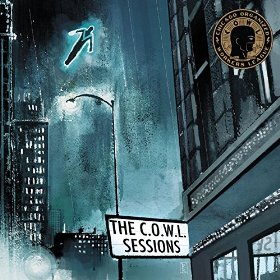
You’ve done a ton of worldbuilding in the short time the comic’s been around. It has a map, you sell C.O.W.L. patches and there’s even a soundtrack for the series. Is that kind of worldbuilding something you expect to do with all your creator-owned comics, or is C.O.W.L. a special case?
It all depends on the book and the idea. Personally, I love anything that adds to the escapism and enhances the reading experience. Anything that plays into the world building aspect of a story. However, I think some stories lend themselves to those things more than others. My next book totally lends itself to that, so I’ll be having a lot of fun with it, but I could see doing a little crime book down the line that may not.
And for anyone who is just now hearing about the soundtrack, which is titled The C.O.W.L. Sessions, I highly recommend it. It’s the brainchild of Joe Clark, an incredibly talented jazz composer in Chicago, who scored The League. Joe wrote this album as if someone in the world of C.O.W.L. were composing tracks about the superheroes of the city. So, it’s very of-the-world, both in its subject matter as well as its ‘60s hard-bop style.
You describe your comic book writing style as cinematic. What makes it cinematic storytelling?
Well, first off… me saying it’s “cinematic” is probably a gross overstatement. I don’t think there’s anything super overt about the way I write, but I did come up writing screenplays. So, that’s the style and form I’ve been most comfortable in. As such, I tend to think of panel descriptions, shots, and coverage in film terms because that’s what I know. The other big thing is in my structure and pacing. I tend to be very rigid in these areas—I like to crosscut a lot, tend to stay away from internal voice over, cover dialogue exchanges with lots of back-and-forth reaction shots, etc.
That said, I’m trying to break free of some of these things and really push my stuff in different directions. The new book I’m working on right now has a lot more experimentation in both its form and structure, and there are certain stylistic things that I’ve never done before that I’m trying on it.
A common complaint over the past decade or so is that comics have become too influenced by cinematic storytelling. How do you strike that balance between your cinematic storytelling sensibilities and making sure the comics you write still stay true to their roots?
Yeah, that’s a really good question, and something I’ve become much more thoughtful about lately. I mean, there are things you can do in comics that you can’t do in any other medium. So, more and more, I find myself looking to exploit those aspects of the medium. For example, my first issue of Batman Beyond 2.0 features conversations over a radio between Terry and Bruce Wayne, for the whole issue. Except… at the end of the issue, we reveal that Terry hasn’t been speaking to Bruce the whole time: he’s been speaking to Dick Grayson. It’s a bait and switch that you couldn’t do in any other medium, because you’d recognize the person’s voice as not being Bruce Wayne’s. It’s a bit you can only do in comics.
The other cool thing about working with Rod is that he challenges me in a lot of these areas. I learn a lot from him, in the way he likes to depict scenes so they work well graphically on the page, whereas I sometimes think of scenes in just shots and edits. Rod’s decision to start building his sound effects into his art has also given me a lot of ideas—issue seven’s opening has a really cool sequence that takes advantage of sound effects in ways that can only be depicted in comics, with the actual sound effect letters being used as weapons… which depicts a character’s power of being able to amplify and convert sound. A guy actually gets tripped by an O in the word KLOP.
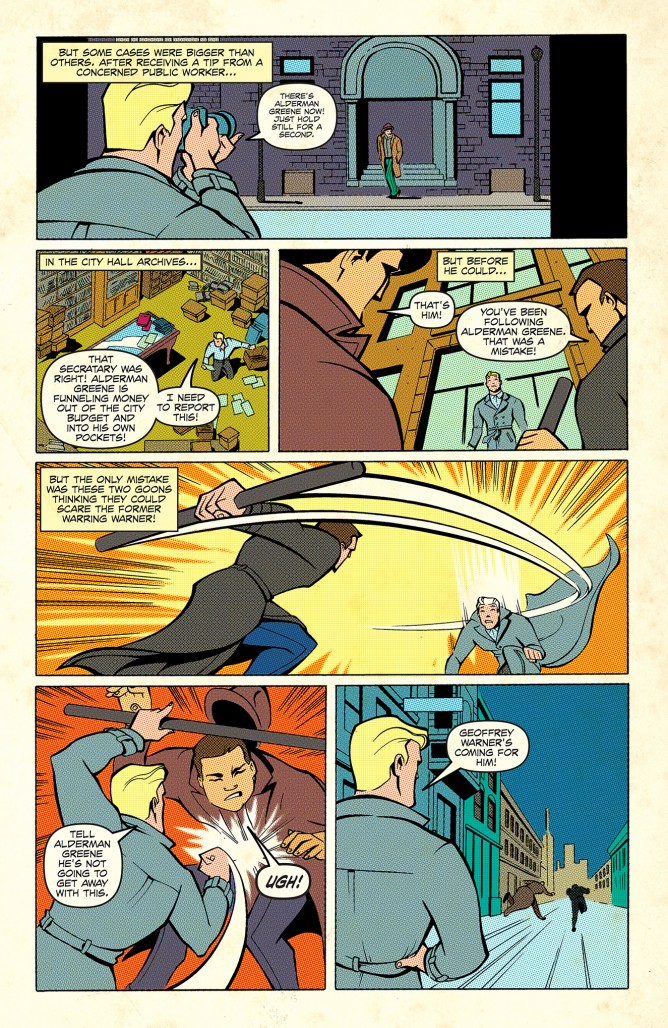
You do a great job with what I assume is a limited budget for The League. Still, how has the lack of budget restrictions from the comics medium opened up your storytelling?
The biggest way it’s changed things for me is that it’s not even a thought. I mean, like you said, we don’t have any budget restrictions when it comes to comics. We have time and energy restrictions, sure, but if you plan ahead and get on the same page with your artist, pretty much anything is possible. Now, does that mean bigger is always better? Not necessariy, no. It all comes down to what the story requires. It’s a case by case basis. There have been times when editors have told me it needs to be bigger because it can be bigger, and that’s a huge benefit we have in comics over something like television. I understand their rationale, and they’ve certainly been right at times, but on the flipside… I don’t think every story has to be about the potential destruction of a city, you know what I mean?
You mentioned previously that you were planning to shoot another short film in August. Did that come to fruition, and can you say anything about it?
Ah, it did not… and it’s totally my own fault. I had something in mind, and just wasn’t able to put it together fast enough. I do still plan on directing a new short, but there are some other live action projects in the works, too that—hopefully—I’ll be able to talk about in the near future.
What’s the long-term game plan for C.O.W.L.? Do you have an end in mind?
We’ve got some endings in mind, more for our characters than anything. Alec and I have been building this world for so many years that we have a lot of stories we want to tell. A lot of them are with the current cast in the book… but some of them aren’t. You can read into that however you like (laughs).
The plan, though, is to keep publishing the book for as long as we can. And really, what that means, is for as long as our sales are there. Our numbers are okay right now, and we’re hopeful that having the trade out will stabilize things a bit, as more people hear about the series. This is my first creator owned book, but from what I can tell it’s kind of a war of attrition. The more issues and trades you can put out, the more the book will support itself. However, surviving long enough to get all those issues and trades out is the big challenge.
Are you enjoying the dive into creator-owned comics? Can we expect more from you soon?
Honestly? I absolutely love it. You have no idea. I enjoy writing Batman and other superhero books a great deal, but there’s nothing quite like building your own world and calling your own shots. Of course, there are a whole host of different challenges that come with doing your own book that you don’t get on work-for-hire projects, but as someone who’s incredibly OCD about pretty much everything, I really thrive in this type of environment. And, I’m super proud of the work. So, yes. You can expect to hear about my next creator-owned series very soon.
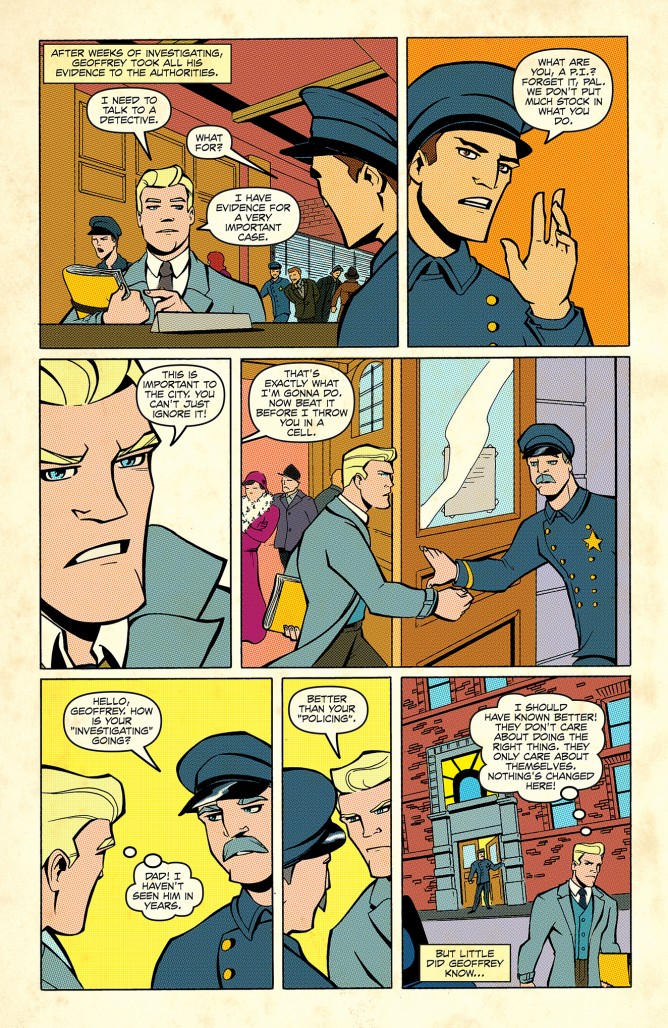
Rod Reis created such a signature look for the series. Did that make it difficult to bring in a guest artist for Issue 6?
No, because issue six is designed as an of-the-world one shot. IE, it’s a 1962 comic that Geoffrey Warner licensed his likeness and life story for. The whole point of the issue is to tell his origin, but also have it exist within the world of C.O.W.L. So in that regard, bringing in a different artist was very natrual. And, issue six won’t be collected in the standard trades. Our hope is to do a couple more of these one shots, and then maybe one day collect them in their own 1962 Marvel-masterworks-esque trade. But, we’ll see.
You recently shared that the physical copy of C.O.W.L. #6 will have a page you can cut out and mail in to receive a patch. Why did you decide to do that giveaway, and how daunting to you expect it to be to fulfill?
Well, considering we’re asking comic buyers to cut their comics… I wouldn’t be surprised if there weren’t that many (laughs). You know, this was actually my girlfriend Jen Aprahamian’s idea. She offered to create ads to go inside the book (and those ads include ads for other Image books as if they were coming out in 1962, which Jen painted all the art for) and we talked about how cool it would be to get a P.O. box and do a mail-in giveaway. Books back then used to do things like this, with cutouts, so we opted to stay authentic. That said, we ran the ad on the inside back cover, so for anyone who does cut out the ad and mail it in, they won’t be damaging any of the art. Of course, if they ultimately decide to buy two copies of the issue in order to always have a pristine one, that’s cool too (laughs).
What’s coming up in the second arc of C.O.W.L.?
The second arc deals with Geoffrey’s decision at the end of issue five, which was to start working with mob-boss Camden Stone to create a false-flag operation in Chicago: they’re going to create super villains in an attempt to justify C.O.W.L. getting a new contract with the city. I said this in the letters’ column, but this is actually where Alec and I had initially planned to kick the series off. However, in order to really make Geoffrey’s choice resonate, we felt it was important to build to it. Back him into a corner and show why he was doing what he was doing. What C.O.W.L. and the Grey Raven mantle means to him.
The thing to keep in mind about C.O.W.L. is that it’s a look at the death of a superhero labor union, not the birth of one. So, the second arc will be following this trajectory, looking at the lengths that people are willing to go to stave death off. It’s going to be a lot of fun… well, for Alec, me, and the readers. Maybe not so much for the members of C.O.W.L. (laughs).
The other big threads in this arc are John Pierce’s murder, as well as the introduction of CPD detective Evelyn Thompson, who used to be a member of C.O.W.L. We’ll also get into what happened between Geoffrey and his former sidekick, Sparrow, and Radia will be taking a much firmer stand in the city and the organization.
I can’t wait for people to see what we’ve got planned.
C.O.W.L. Volume 1: Principles of Power is now on sale. Issue 6 of C.O.W.L., featuring art by Elsa Charretier, comes out in comic book stores Wednesday 11/26.


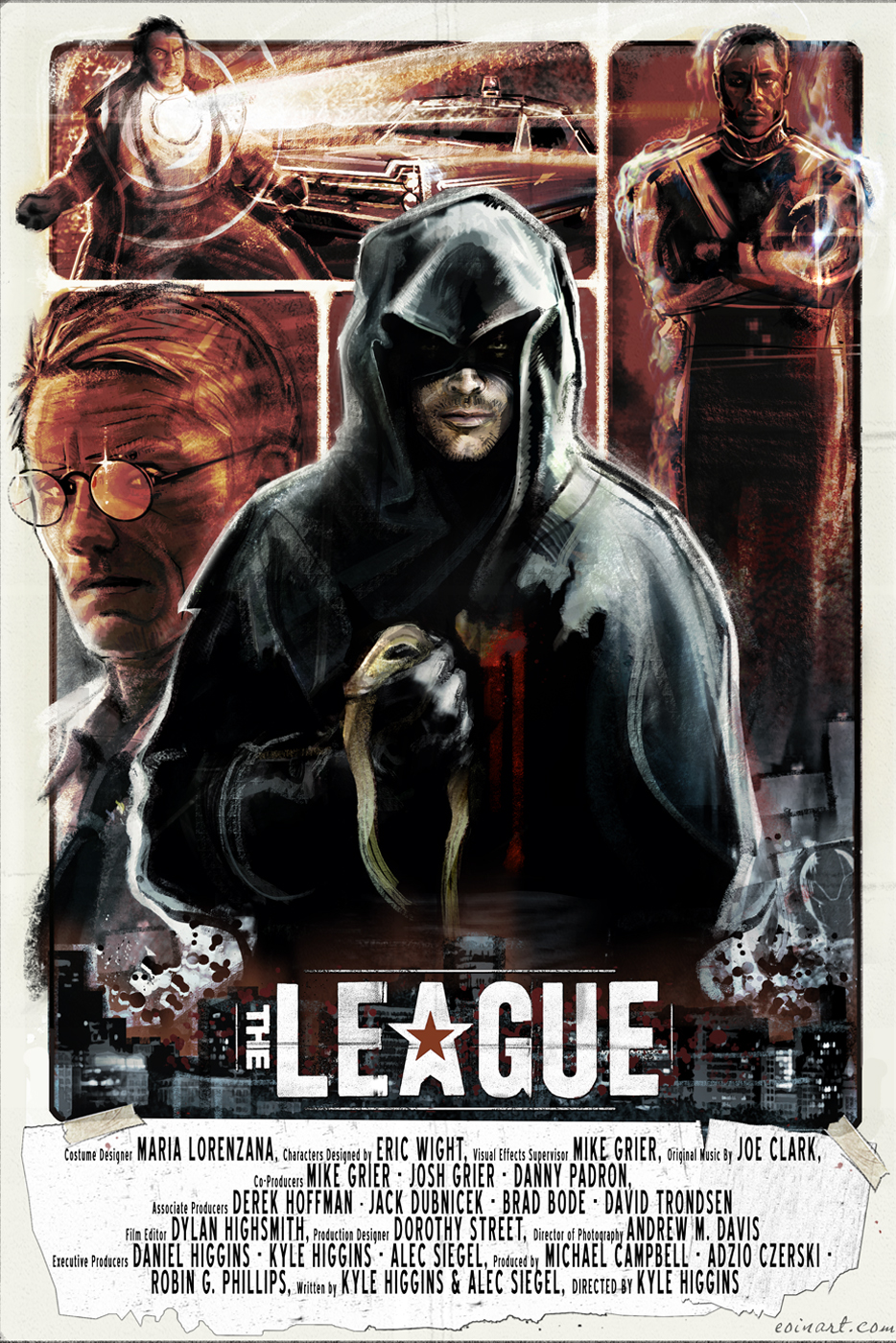


This book is sooooo good. Thanks for highlighting it!
Comments are closed.